HOLA







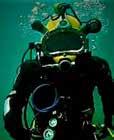

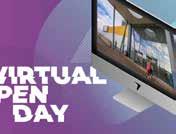


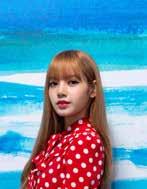


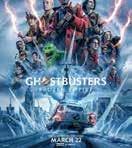



















Autumn is here, holidays coming up soon.
But before we get to that, we need to prepare and a part of preparations must be to consider ‘what next’ after high-school.
The tool for this is Open Day. Open Day gives you the opportunity to see what institution you would like to go to after high-school. It is the only chance to evaluate both the surroundings and the lecturers - even fellow students you might see.
It is not just for grade 12 - OK, well - it sort of is - but sneak in if you can even from grade 10 and 11.
It gives an insight and should enable you to make an informed choice.
Choosing the that is also why of changing your 11 (and 12). It is not easy, It gives you the choices to reality, We have a great itime pilot! those ships in and out Movies and music Kpop and why Good read!
Hola is here to give you a break from all We are also serious, but it is now called
the right thing is important and why we have an article in terms your subjects in grade 10 and
but it is possible. the chance to adjust your reality, so use it.
great career description: Marthose heroes who guide big out of harbors. fascinating.
music of course. More on why it is changing now.
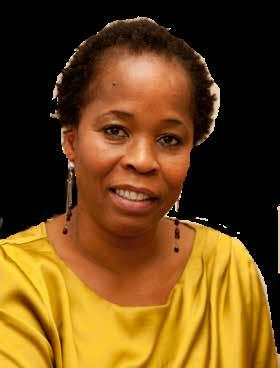
all the school stuff. called edutainment.
Sybil Otterstrom Editor and CEO
Want to be a contributor?
Wanting to write like a pro?
You CAN!
look firther and see how you can become one.
... and it is a good feeling to entertain and inform.
Masiziba Hadebe is doing her Master’s in Agricultural Economics at the University of the Free State (UFS). She is driven to make a change and is a passionate volunteer for community projects. She loves reading and writing about science, agriculture and anything in between. She believes you can wear a smile whatever the weather!
My name is Lerato Pitso. I am from Maseru, Lesotho. I am a Sociology and Criminology student at UFS and Miss Supranational Lesotho 2023. When I’m not a model and a student, I write about my philosophies on life as well as expressing my feelings on paper. I hope that my views will aid in the social development of the next person.

And we are honoured to also have industry-views from:
Edith Wynne-Trollip: - Curriculum Support and advise, Overberg District
Nadia Hearn - Founder of Get-Published
Ashalia Maharajh: - Founder & Director, Sivuka Consulting (Pty) Ltd
Thozamile Mvumvu: - CFE Programme Manager, False Bay TVET
Daniel Roos - Account Executive, Transform Marketing



Artvilla Dakamela, 22, another wizard from the literature world, he is an Accounting student at the University of the Free State. He has written for the Initiative for Creative African Narratives (iCAN) amongst others. He currently resides in DurbanKZN - and is a very enthusiastic reader and writer.
My name is Molatelo Kate Kgatla, I’m 24 years old. I was born and raised in Lenyenye. I’m a grade 2 teacher at Vunza Teddy Bear Learning Academy, an author of a book titled her jouney as a young mother. I became a mother at 17. It influenced me to write about my personal journey to try and help someone that could be going through the same. I love writing and I love my 7 year old daughter and life.


Lesly Malose Mahapa is a singer/writer/poet. He started writing at the age of 14 and has since been on a journey to pursue his music and writing career. Lesly is currently working with an indie group ‘MozSouth’ based in Ivory park, Midrand. Lesly is also a brand ambassador for a local clothing line “Boi Boi apparel”




It is starting to be time to look at choices. Even just having started in grade 10 does not mean that ‘choices’ will not be coming fast and furious at you.
However, with choices also comes the possibility that you might have chosen some thing not optimal. That you would like to change your direction and choosing something else.
Can you do that? And how often? After all, when you sign up for grade 10-12, it is assumed that you sort of know what you aim at after matric.

… and that might not be the case.
Open Day is the opportunity to go and see for yourself. It is more than just university, so take your time to investigate what you might like to do.
Open Day offers the chance to talk to the lecturers that you will meet after matric. This is important as you can get a feel for how education will be like
Is it only for grade 12? Well, sort of, and not really. Squeeze in as grade 10 and 11 if you can.
Get to know. The earlier the better! It can also assist in choosing subjects after all.

I found an interesting article here. It is all about changing subjects in grade 10-12. It is not so easy but it is possible, I have copied the entire article for you as it is not long:
You can change a certain number of subjects, depending on the rules for public schools. (Please double check with your Province’s Education Department.)

• A learner can change 2 subjects in GRADE 10 and 11. This will be managed by your school. The closing date: 31st July.
• In exceptional cases a learner can change ONE subject in GRADE 12 if the school think it’s in the best interests of the learner. The school may only take this decision after consulting with the Head of Department. The closing date: 30 January for the subject change for grade 12 learners.
You must submit the following:
• a letter of motivation from a parent or your guardian
• a letter from your Principal either supporting, or providing reasons for not supporting, your change
• a letter from the subject teacher explaining the programme to be
followed to help the learner to cover all the aspects of the curriculum statement for the previous grades that were missed.

Things to consider before you change your subjects:
• Think about what you want to do as a career. Make sure your subject choices support this career rather than just choosing something that may be easier. Your decision will affect your future, so think carefully.
• The later you leave it – the harder you’ll have to work to catch up the new subject/s.
• By studying something you love, you’ll be more motivated to do well.
These are the rules.

A word of advice (from here):
Core Mathematics is essential for studying Accounting, Information Technology and Physical Sciences, therefore, should a learner who is taking either of these subjects change to Mathematical Literacy, and then Information Technology and/or Physical Sciences would also have to be changed.
Be aware: try to make sure that what you want to do later will match your choices before you start grade 10.


This is all from the SACAP website - read on
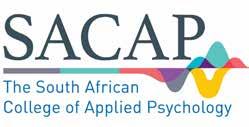
Most education institutions, from preschool through to higher education institutions, have open days. While an open day theoretically is focused on assisting prospective students, is it practically going to be worthwhile? Are you trying to decide if the benefits of an open day are worth it? Yes, they are. Even if you know where and what you want to study, it can still be beneficial to attend an open day.
The purpose of an open day is to get more information on a specific institution, explore its campus and meet staff members. As well as meet current students and other prospective students you may end up in class with.
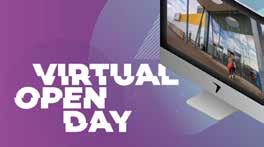
An open day programme varies from institution to institution. Most campuses have on-campus open days and some schools now offer virtual open days.
• Tours around campus (which may include potential residences).
•
• Information relating to specific courses and their prospective career opportunities.
• Access to student, career and course advisors.
• Opportunities to meet and talk to lecturers and course convenors.
• Time to chat to current students.
• Financial Advisors to discuss potential funding options.
A timetable of events and where they are expected to take place is often provided ahead of time and always on the day. Use it to plan out your day before you get there so you can maximise the benefit of attending it.

To get the most out of an open day, you need to do some preparation. Look at what course you want to take, as well as the various subject options within it. Make a list of your questions. If you’re wondering or unclear about something –ask.

Go over all the information you received during the course of the open day. If you need to, then reconsider your options in light of what you have discovered. On the day you should take note of relevant people that can assist you with follow up questions. If you have any questions or need further information, make appointments to see them.

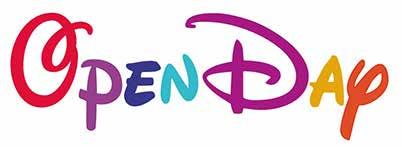
I only went on one open day during grade 10 and that was to a FET college. Interestingly, I was not aware that the day when the college opened its doors for us was an ‘open day’.
The day was filled with activities to introduce us to the courses offered and show us around the college. We met the lecturers, some of the students and got cool prizes that were coupled with a prospectus and registration information. All the information left us in awe and in inspiration of what we could be.
However, it is important to note that we went physically to the campus because the college was nearby. We could not go to other universities because they were far and could be very costly. But of course, the COVIDera has showed us that we can go virtual (virtual open days). Eliminating distance barriers in an instant and broadening our choice of colleges and universities we can go to.

As an alternative, my high school had brought the varsity to us by calling students from various institutions around the country to tell us how varsity is and what we can expect. The students brought their respective prospectus in order to give information

on the choices we could make and sharing their varsity stories with us. It was as if they were bringing the ‘open day’ to us.
In all those instances, I realised that open days are very important mainly because they open your eyes to opportunity. They provide information on career choice and what you need to do and have in order to reach a certain career destination (requirements).

Additionally, the open days also expose you to potential bursaries and scholarships that you may have not heard of in mainstream media. Especially if one were to consider that each university can develop its own relationship with funders and that is why you will see some of the bursaries stating which college or university you can specifically go study at.
Moreover, open days show the life that you will be expected to live on campus. This is through exposing you to extra-curricular activities and sporting activities. Furthermore, introduce you to potential accommodation and what kind of life to expect in that aspect.
Masiziba Hadebe
We are proud of again publishing information from Allan Gray orbis Foundation.
Allan Gray Orbis Foundation launches its 2024 Entrepreneurship Game for learners from across Southern Africa.
12 April 2024, Cape Town - Prior to the COVID-19 pandemic, more than half of Southern African young people between the ages of 15 and 24 were facing the prospect of unemployment. With this mind, the Allan Gray Orbis Foundation – an initiative that focuses on developing young individuals with entrepreneurial potential – has again launched its gamified Entrepreneurship Challenge for high school students from across Southern Africa and is calling students to participate in this year’s challenge.

The competition, which is in its eighth year, opened for gameplay and is aiming to see over 20 000 high school learners from South Africa, Namibia, Botswana and Eswatini (formerly Swaziland) enrolling to compete in games and shark-tank style entrepreneurship pitching contests. The competition also includes online webinars and facilitated school visits during the competition, as well as exciting prize packages.
“Through engaging simulations and enriched content, participants will learn to identify entrepreneurship opportunities and collaborate effectively. This initiative democratises access to entrepreneurship education, empowering Southern African children to unlock their full potential and hone the skills they need to shape a brighter future for themselves,” says Marcel Manikum, Project Lead of the Allan Gray Entrepreneurship Challenge (AGEC).
The Entrepreneurship Challenge was not only designed to be a competition, but also to provide further access to supportive communities within the Allan Gray Orbis Foundation and a year ‘round dynamic playground where learning is both educational and fun.

“The 2024 competition promises to be more exciting than ever before. The biggest change in this year’s competition is the introduction of a brand new game for high school students, which is known as the Allan Gray High School Game that requires less than 14mb of data to participate. Learners have access to a Gaming Hub where they can find games, resources and information that can help them in the competition.”
One of our former participants, Thatego Moloi, who participated in the competition said this of the experience: “AGEC has influenced me to the extent that I was able to acquire, learn and develop a positive and winning mindset. As a young developing entrepreneur, I was motivated to launch my business of selling grown fruits and vegetables from my garden. It was not easy but AGEC came to my rescue, and the game played a bigger role in my journey because I learnt about steps to take to be a successful entrepreneur!”

Through innovative gaming and interactive learning, Thatego was liberated from self-limiting beliefs and societal constraints, which set her on the path to self-efficacy and freedom says Manikum. “The challenge offers the potential opportunity to ultimately join the Allan Gray Orbis Foundation’s other ongoing entrepreneurship development programmes which provide extensive bursary support, coaching and access to career opportunities.
Registration is simple and straightforward. Those who wish to enter the competition can visit the official challenge website www.theentrepreneurshipchallenge.com or email info@theentrepreneurshipchallenge. com.

“We encourage you to spread the word about the challenge so that more learners can also join in on the fun and excitement. You can also tell your teachers and principals about the game which can be paired with their classroom lessons. Our call to action is clear and urgent: join the challenge, transform your future, and unlock your entrepreneurial potential,” says Manikum.
In closing, he reminds all interested participants: “AGEC doesn’t just introduce entrepreneurial concepts; it helps cultivate a mindset of resilience, creativity, and limitless potential.
We believe that entrepreneurial spirit isn’t just about the desire to start businesses; it’s about a passion to ignite change, challenging conventions, and shaping a brighter future. By embracing entrepreneurship, individuals are empowered to write their own narratives, defy limitations, and become the architects of their destinies. That is a tremendously exciting prospect for any young person from Southern Africa and one that they should grab with both hands.”
The Allan Gray Entrepreneurship Challenge (AGEC) was established in 2017 to inspire and nurture the entrepreneurial spirit among high school students in South Africa.
Initiated by the Allan Gray Orbis Foundation, our annual competition has since become a flagship event, providing a platform for young innovators to showcase their business ideas and hone their entrepreneurial skills.
Over the years, we have expanded our impact and reach to primary schools, TVET Colleges and additional SADC countries while remaining focused on empowering the next generation of entrepreneurs.
The Allan Gray Orbis Foundation believes that entrepreneurially minded individuals with ethical values and strong leadership skills hold the promise of change.
We stand behind entrepreneurs improving the socio-economic landscape of Southern Africa.
Our mission is to foster such impact by providing youth demonstrating the highest potential access to education and cultivating within them an entrepreneurial mindset.

Ever thought about being a marine pilot? The ones who are guiding big ships in and out of the harbors? The heroes who climb onboard via rope ladder? But how to become such a pilot?
I found the info here. The first part of the article is a bit ‘cryptic’, but see for yourself. We have gone straight to the interesting parts:
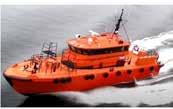
The qualifying learner will ensure the safe and efficient passage of vessels entering, sailing from and shifting within the port operation area. The competencies achieved through this qualification will be applied at all compulsory Pilotage ports in South Africa to international practice and Harbour regulations.
This qualification is aimed at learners that are in possession of a relevant undergraduate qualification and those with relevant experience as deck officers in deep sea. It will ensure that Marine Pilots are qualified and provide a professional service after the prescribed practical experience.
The learner assessed as competent against this qualification will be able to:
• Communicate with all role-players to ensure optimal resource use to perform pilotage.
• Apply marine pilotage knowledge to pilot a vessel or a tow into port.
• Embark and disembark a vessel and perform pilotage or tow operation.
• Apply skills, knowledge and attitudes of management to pilot a vessel or tow within port limits.
It is compulsory for learners wishing to access this Qualification to be competent in:
• Communication at NQF level 4 or equivalent.
• Mathematics at NQF level 4 or equivalent.
• Physical Science at NQF level 4 or equivalent.
It used to be where all such training was done in Rotterdam, Netherlands:
Apprentice Pilot Training - 52 weeks
Phase 1: 12 weeks
• Maritime English (SMCP) General communication procedures.
• General regulations on maritime traffic.
• Tides and hydrographic conditions.
• Theoretical Manoeuvring.
• Practical manoeuvring.
• Radar Simulation.
Personal Safety training. Buoyage Systems.
Phase 2: 8 weeks
• Communication skills.
• Bridge resource management.
• General regulations of interest to pilots.
• Radar Simulation.
Understanding the problem solving process. Management of Dutch Pilotage organisation.
Phase 3: 32 weeks
• Regional communication procedures.
• Regional Regulations of Maritime traffic and piloting.
• Topographical knowledge Tidal conditions Practical visits.
• Practical navigation and manoeuvring in the designated area.

I think this is to be followed by the ‘top-up in South Africa.
South Africa
National Certificate: Marine Pilotage: 120 credits.
Communicate with role-players to perform pilotage, 8 credits.
• Manage bridge resources, 8 credits.
• Apply local, national and international codes, regulation and statutory reporting, 8 credits.
• Apply knowledge of Hydrodynamics in pilotage, 15 credits.
• Understand the principles of ship stability in relation to piloting a vessel, 10 credits.
• Pilot a tow into port, 10 credits.
• Embark and disembark a vessel by helicopter or using a pilot ladder, 24 credits.
• Pilot a vessel within port limits, 10 credits.
• Conduct VTS remote pilotage, 10 credits.
• Provide support to manage marine environmental risk in the port, 5 credits.
• Demonstrate an understanding of stress in order to apply strategies to achieve optimal stress levels in personal and work situations, 5 credits.
If this is your desire: good luck!



Knowing yourself and your capabilities


For you to pursue your career choice. You need to pass your National Senior Certificate!

“ it is in your hands “
-Nelson Rolihlahla Mandela


The Eastern Cape Department of Education encourages learners to choose suitable career path, by collecting information that will help them pursue their career / field of study.

Entrepreneurship is often perceived as a pathway to financial independence and business success. However, in the main, entrepreneurship represents a deeply personal journey that mirrors the values, ambitions, and resilience of an individual. This article delves into the inspiring story of NomaDiya, an 88-year-old organic entrepreneur from a township in Cape Town, whose life epitomises the spirit of entrepreneurship as a manifestation of an individual.
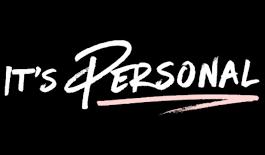
NomaDiya’s entrepreneurial journey commenced in the 1970’s when she departed from her Eastern Cape home, in the Lady Frere area, to seek a better life in Cape Town. Despite possessing only a primary school education, NomaDiya was resolute in her determination to provide for herself and her family. However, securing formal employment proved difficult under the apartheid regime for person of her colour, compelling her to turn to entrepreneurship as a means of sustenance.
In the 1980’s, NomaDiya collaborated with her peers to establish a group money-saving scheme known as “umgalelo.”
NomaDiya’s entrepreneurial insight extended to procuring second hand clothing from affluent areas and selling in her community. She also honed her skills in clothing mending using an old Singer sewing machine, to mend torn clothes to resell them. Furthermore, she procured shoes from factory outlets in Elsie River and Salt River, skilfully reselling them at a profit.

Despite encountering risks, such as precarious conditions in the hostels at the time where she and her children peddled their goods, NomaDiya’s resolve remained unyielding. Her narrative underscores the effectiveness of perseverance and entrepreneurship in the face of adversity.
Today, NomaDiya remains self-sufficient, living with her family, and some of her children and grandchildren have taken the entrepreneurial challenge. Her entrepreneurial endeavours have not only sustained her and her family but have also opened doors of opportunity for some of her children, some have even graduated from esteemed institutions such as the University of Cape Town, the University of the Western Cape, and UNISA, excelling in their professional pursuits.
NomaDiya’s story is a true story, and it serves as a touching reminder that entrepreneurship go beyond mere business initiation, it entails creating opportunities and effecting life-altering transformations into one’s prevailing conditions.
Her voyage imparts invaluable lessons in resilience, grit, fortitude, and the efficacy of a growth oriented mindset. As we navigate the complexities of contemporary life, NomaDiya’s narrative serves as a beacon to remind us that with determination and persistence, the unimaginable can be achieved.

Can you buy popularity? Can you buy fame?
Yes, now you can … if we focus on online and social media.
I found a disturbing article here. It is about the new term ‘click farms’.
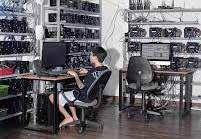
The article is by the British photographer Jack Latham “[who] spent a month in the capital Hanoi documenting some of the shadowy enterprises that help clients artificially boost online traffic and social media engagement in the hope of manipulating algorithms and user perceptions”
That is like the definition of click farms, but how does it work?
The background is that the more ‘attention’ you have, the more valuable in terms of advertising. Advertising money is the trigger in all of this. A big following can be turned into advertising income.
That means: it is all about ‘clicks’.
Most click farms are situated in Asia where the pay is lower and the electricity cost is low (powering hundreds if not thousands of devices). However, it is a global occurrence.

It is not even necessary to have the entire cell phone anymore. Phones without screens and batteries are wired together and into the servers. That is now ‘Box Farming’.
A click farm might be a one-man operation or a family business, but the trend is that it looks very industrial-scale now. We are talking several ‘farmers’ specializing in one element of social media and becoming experts.
Here we see one person doing Youtube only. Another doing TikTok and so on.
Each person is now responsible for a wall of devices and and the coding and ‘clicks’ that goes into it.
The cost? Typically one cent (US) per click. Of course it can run into real money, but for a limited campaign the cost is not massive.

Is it all ‘innocent’? just getting your video to be a hit? It can be sinister.

I quote: “Click farms around the world are also used to amplify political messages and spread disinformation during elections.
In 2016, Cambodia’s then-prime minister Hun Sen was accused of buying Facebook friends and likes, while operations in North Macedonia were found to have spread pro-Donald Trump posts and articles during that year’s US presidential election”. Welcome!
We added two new exhibitions to our collection on the floor. The 4IR and Mirror Maze exhibitions
The 4IR exhibition currently hosts the Humanoids (two small ones and the big one called Pepper), Virtual reality Station, Augmented Reality and the interactive displays integrated with of a number of TV screens.
This concept is through the touch screen located at the entrance to the center. Interactive display section has been created where visitors are encouraged to use traditional touch screens to immerse themselves in games and content around Science Technology Engineering and Arts and Mathematics (STEAM).
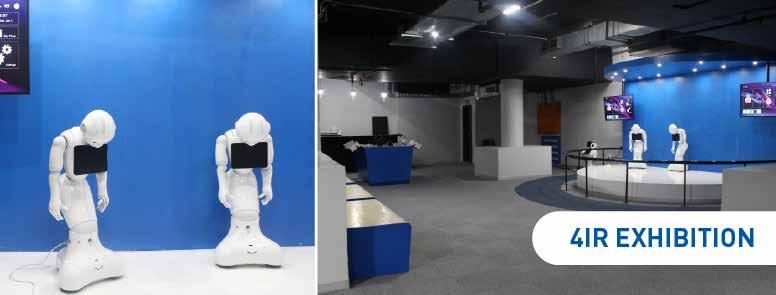
Children are provided with the opportunity to play games to train their analytical ability, improve their ability to solve puzzles and chal-

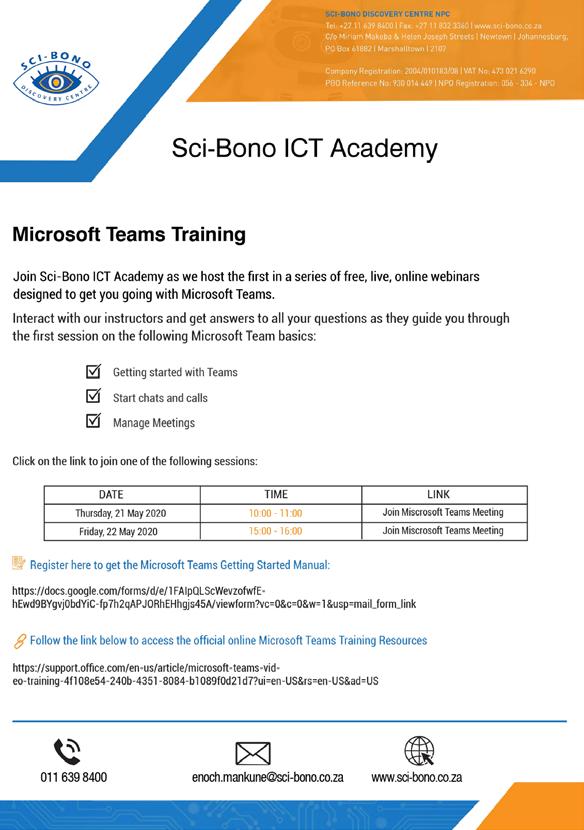
lenges. They are also challenged to explore more traditional content style, such as exploration of subjects including how Artificial Intelligence works, Machine Learning, how data transfers over networks etc.
While traditional science teaching has complex challenges around logistics, safety and costs. VR has none of these limitations. Experiments are done as often as needed with no physical costs of materials or safety concerns. Students can learn about physics and chemistry, life science etc. in a safe environment. Within VR learning occurs without any distract but with full immersion. Learning and understanding mathematics becomes easier and more fun inside of VR due to the nature of games and how they are designed.
This is designed to make learning and exploration real fun especially for little ones. Wide learning opportunities exist through this exhibition, children have many prospects to learn on, e.g. google earth exploration experience.

With Google Earth VR, children can travel to almost any place in the world. They can fly all over the world and explore any city, any monument and landmark anywhere in the world.The exhibition has two different types of humanoids the small one (called Sanbot Max and the Bigger one called Pepper).
The Sanbot Max robot was designed to be implemented into numerous kinds of business scenarios, providing customers and staff members with intelligent and efficient services.
Pepper is a semi-humanoid robot, which means that a human has to control it. It is designed with the ability to read emotions. Pepper recognizes faces and basic human emotion.
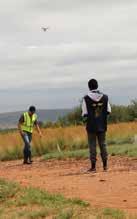
Did you know that the Clubhouse has three certified drone pilots?
They also have 10 DJI Tell drones that they will used for their drone course.
They are currently putting together content for the said course.
In addition, the Clubhouse offers programmes such as Teach Fundamentals of drones, real-life applications of drones: namely surveillance using object identification and tracking to videography for commercials and other media use.
This includes python programming that covers drone automation.



A mirror is an object that reflects an image. Light that bounces off a mirror will show an image of whatever is in front of it, when focused through the lens of the eye or a camera.
Mirrors reverse the direction of the image in an equal yet opposite angle from which the light shines upon it. This allows the viewer to see themselves or objects behind them, or even objects that are at an angle from them but out of their field of view, such as around a corner.

Natural mirrors have existed since prehistoric times, such as the surface of water, but people have been manufacturing mirrors out of a variety of materials for thousands of years, like stone, metals, and glass. In modern mirrors, metals like silver or aluminum are often used due to their high reflectivity, applied as a thin coating on glass because of its natu- rally smooth and very hard surface.
A maze is a path or collection of paths, typically from an entrance to a goal. The word is used to refer both to branching tour puzzles through which the solver must find a route, and to simpler non-branching patterns that lead unambiguously through a convoluted layout to a goal. The pathways and walls in a maze are typically fixed, but puzzles in which the walls and paths can change during the game are also categorised as mazes or tour puzzles
Mirror Maze
The mirror maze itself is a pattern, combining several characteristics of geometric patterns: repetition, symmetry and tessellation using repeated equilateral triangles. These triangles fit together without any gaps or overlaps, creating a tessellation. Mirrored surfaces all around reflect the pattern so that it repeats and appears infinite.
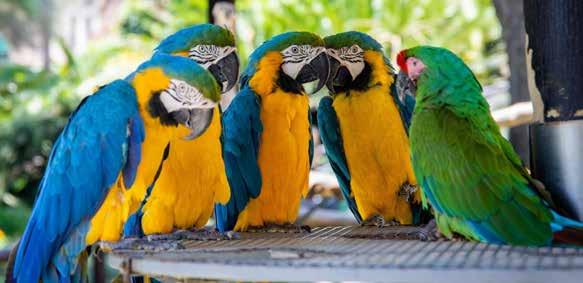
We have all heard about parrots mimicking human speech. Now here is a good one: A crow is ‘camping’ in a tree next to the police station in Becester. UK. It has now learned to 100% accurately mimicking the twotone police siren on the police cars.

This is even to the point where the police staff is getting confused and not really knowing if their cars are faulty or what. The link is right here.
But is it unusual and it is only parrots?
It is not only parrots. As a matter of fact, there are plenty of birds which can do this.
The little budgie can have a vocabulary of up to 2,000 words – very impressive. The little starling is not far behind either.
The price probably goes to the Australian cockatoos who not only have a huge amount of things to say, but has even associated with the wild ones and been teaching the wild ones human words. Very confusing really.
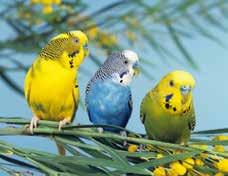
The big question is of course: do they only mimic human speech or do they ‘talk’?
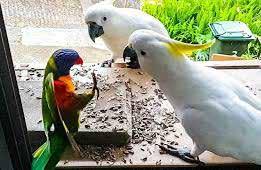
There has been plenty of research and the conclusion is really: the only say certain phrases based on input. This can be like: “does poppy want a cracker”? and the parrot says “Poppy loves you”.
Or something like that.
Without the stimulus the bird may still come with some phrases, but it has nothing to do with constructive cognizance. So no, you cannot have an intelligent discussion about the universe with your pet.
Did you know? From here
Parrots like playing just like a small child. Insofar as parrots (in general) have the problem-solving skills of a young child, we should also do something for them. Some like play games on a tablet (like balloon popping) but their anatomy gets in the way. They pop balloons with the beak, but will need to turn the head to squint at the next balloon (they have their eyes on the side of the head, remember).
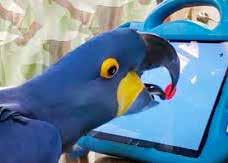
Somebody is now designing tablet games for parrots! It is true!


Why is golf perceived as being so ‘exclusive’? the game for the rich and famous?
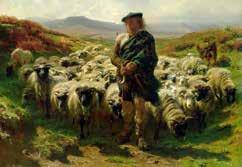
It is old. The rumour is that the Scottish shepherds walked around and hit some round stones with their shepherds staff. Just for fun. It might just be a good story.
That said, it is a fact that it got established in the 15th century and the Scottish classical golf courses date from that time.
This is from voi.id: ‘Golf is indeed referred to as a sport for the rich because the costs incurred to play this game are quite expensive, more expensive than other sports such as badminton, football, swimming, and so on. Because it costs a lot, only people with money are able to do golf’.
It lists a few of the costs: the golf course is rather big and must be maintained. Grass and bunkers, and things. That is huge.
The learning curve is steep and will require teaching. That means the golf-pro at the club.


Then we have club fees and the golf clubs and much more.
The cost is up there and that means that if you want to play golf, you gotta’ have moolah.
Here is another gem: If you have arrived you would like to mix with others who have arrived. (yes, it is Obama). That is the golf club. It is exclusive because it is expensive to be a member of a ‘good’ club.

Are all golf clubs expensive then? Not necessarily. But it might still be a notch up from the local rugby.
Can you then make money playing golf? Oh yes. Tons of it. This is what I found.
An example: ‘Tiger Woods has earned over $1.2 billion from golfing.’ That is serious money.
If you win a tournament you will get the prize money.
But the main thing is sponsorships: ‘Many professional golfers earn a substantial portion of their income through sponsorships and endorsements. On average, a PGA golfer makes $1.5 million a year.


However, note that what a professional golfer makes varies based on skill level, endorsement deals, and tournament wins. Is it for you?

It is not so easy as it says. Getting rich really depends on a lot of things and the ladder to climb can be long and steep. is is from here and here
The difference between the top players (in any sport) and the ‘average’ player can be mind-blowing.
So let us look at a few of the top sports:
Soccer is #4 with an average of $3,9 million, but the highest-paid soccer player in the world in 2023 was Ronaldo earning $275 million.
There are others as well: Boxer Floyd Mayweather Jr. is one of the highest-earning sportsmen, bagging a whopping $275 million for his 2018 fight against Conor McGregor.

Maybe I could consider getting a punch in the face and earn some $275 million?
Some of the names we recognize: The highest-paid athlete of all time is basketball player Michael Jordan, with career earnings of $1.85 billion.
What we also might take into account is that their ‘sell-by date’ is coming up faster than in other occupations. You can go on pension as 67 as an accountant, but I still need to see a 67 year old soccer player at the top of the tree (I could have missed it).
With a pension age coming faster at athletes, they will all need to consider what to do after their career is ending.
Saving up and investing is much more important than in other occupations. If it is combined with a high-end life-style they have to think deeply at it and perhaps get some good advisers in on it.
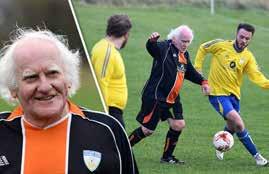
Some are going into business and capitalizing on their name and reputation. That might only last until the next ‘generation’ is going on pension.

It is easy to say ‘Hamilton’ if we should name a F1 driver, but what if we say ‘Emmerson’? or ‘Moss’? the memory span can be short in the sports world.
… but please keep at it!
(it is Emmerson Fittipaldi)

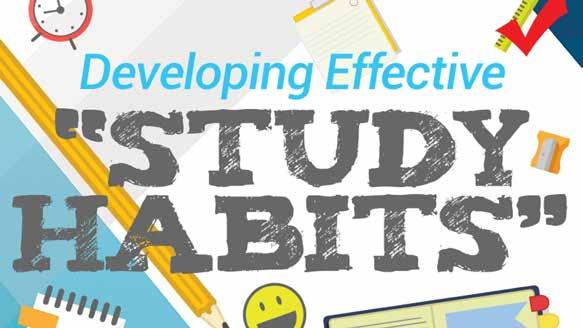
We have received the below from Meropa Communications. All opinions are Meropa’s. We have edited the contribution slightly.
One of the most important skills to develop in high school is learning how to study effectively, with future higher education success in mind, an education expert says.

“For many high school students, the focus is almost exclusively on doing well in their next exam by trying to master their work in whichever way possible. While it is, of course, important to try and perform optimally during exams, the more fundamental skill to master during your high school years is the ability to study effectively while the workload is still relatively contained,” says Dr Linda Meyer, MD of IIE Rosebank College.
Dr Meyer explains that high school should be viewed as a stepping stone that prepares students for the challenges of higher education and, ultimately, a successful career.
The important skills include:
Understanding one’s learning preferences and needs is the cornerstone of effective study habits. Tailoring study methods to these personal inclinations can significantly boost comprehension and retention.
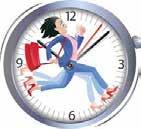
Effective time management is pivotal in the high school setting and beyond. It involves prioritising academic tasks, setting achievable goals, and crafting a balanced schedule accommodating studies and personal time.
Active engagement with study material through summarisation, questioning, and peer teaching enhances understanding and memory.
Recognising the value of seeking assistance and engaging in group study can greatly enrich learning.
Consistent, daily revision and practice reinforce learning and prevent the need for last-minute cramming.
“Implementing effective study habits involves a commitment to gradual change and flexibility. High school students might start by setting specific goals for each study session or experimenting with various learning strategies to discover what works best.” Dr Meyer says.
“Good study habits established in high school do more than prepare students for academic success in university; they equip students with skills applicable to various aspects of life, including professional and personal challenges.”
Dr Meyer says this is why high school presents a pivotal opportunity for students to build and refine their study habits, setting a solid foundation for university and beyond.

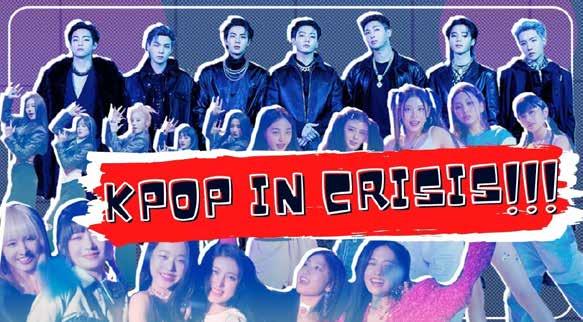
That might be too much to claim, but there are some disturbing movements going on. I found something here.
No mistake: K-pop is as popular as ever, but it is the success that is catching up with the entire industry. This sounds strange, but this is the underlying reason.
K-pop is becoming international. K-pop success in the biggest markets (US, Europe and Asia etc.) is forcing the bands to focus more on being ‘attractive’ to a non-Korean audience.
That also means performing in English now. However, the Asian markets are not forgotten. Japan is big and so is the rest of Asia (outside of Korea).

Example: Look at Liza from Black-Pink. She did start out as a Korean performer, adapting to the Korean culture and the ‘likes’ of her audience. What I have spotted is that she is incorporating more typical American rap elements. In English!
Is it still K-pop? Absolutely! But with a ‘nod’ to the bigger markets.
Does that go down well with the fan-base in Korea? Not necessarily and that is the problem.
With the starters of K-pop (BTS, Black-Pink, etc.) getting older, the next generation of K-pop bands should be busy launching, but such new entrants are not selling as well as they should either.
The new bands we see are not necessarily from Korea. This can get confusing, but it is the same with say jazz. Surely it started in New Orleans in USA, but jazz is now rather international and nobody can claim ‘ownership’ of jazz. The bigger producers of jazz are Japan and Denmark.
And so it goes with K-pop. The new bands are there and they are gaining popularity and that is not necessarily limited to Korea.

The latest is W.i.S.H from India. Still very much K-pop.
Baby Monster:A new band started in 2023. They are now Pepsi presenters in greater Asia.


Unis: with the performers from Korea, Japan and the Philippines.
All said: look out for AI-generated K-pop
The National Student Financial Aid Scheme (NSFAS) is a government entity under the Department of Higher Education and Training (DHET)
Supports access to and success in, higher education and training for students from poor and working-class families who would otherwise not be able to afford the cost of studies at a public university or Technical and Vocational Education and Training (TVET) college.
•Provides financial aid to eligible students who are studying or plan to study at any of the 50 TVET colleges or the 26 public universities in South Africa
•Identifies students who qualify for the bursary
•Provides bursaries to students
• All South African citizens
• All SASSA grant recipients
• Applicants whose combined household income is not more than R350 000 per annum
• Persons with disabilities with a combined household income of not more than R600 000 per annum
• Students who started studying at a university before 2018 and whose household income is not more than R122 000 per annum
What does the NSFAS bursary cover?
• Registration
• Tuition
• Book allowance
• Accommodation allowance
• Transport allowance
• Food allowance
• Personal care allowance
Does the NSFAS bursary offer any additional support for students with disabilities?
Yes, NSFAS further supports funded students with disabilities through an additional allowance that covers:
• Medical assessments
• Assistive devices
• Human support to cover for the cost of a caregiver, guide dog, scribe or tutor.
How, where and when can one apply for NSFAS?
The 2021 application season will be communicated through media, social media and the NSFAS website www.nsfas.org.za.
Applications are submitted online through the NSFAS website: www.nsfas.org.za
To apply for NSFAS funding students must have a registered myNSFAS account
If you plan to study in 2021 and require support from NSFAS, you may open your myNSFAS account now to keep updated with the latest funding information.
Connect with us using the following channels:
National Student Financial Aid Scheme myNSFAS myNSFAS
NSFAS Connect: www.nsfas.org.za and log into your myNSFAS account
NSFAS Connect gives you access to quick facts and frequently asked questions. Applicants and students can also submit and track a query for further assistance.

Boeing seems not to be doing very well of late.
It looks as though it is a lot of things that are not related all happening at the same time.

It all started with the introduction of the 737- MAX. This new variant has an advanced piece of software – MCAS. It is rather technical but it was supposed to assist the pilots in handling the flight. However, it was
a contributing factor in the total fatal crashes that killed 346 passengers and crew in 2018 1n 2019.
But this was not the real story. Technology can fail. But Boeing tried to obfuscate and that is where something as ‘trust’ comes into play.
The 737 MAX was grounded globally for months. And that must have hurt.
Then we had the Air Alask flighty
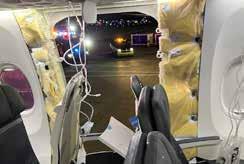
where a part of the window assembly just fell out mid-flight. The reason: bolts were not put in place to prevent exactly this. Bad workmanship!
Then a few weeks back the Boeing 787 plunged dramatically but did not crash. The pilot claimed that he temporarily lost control of the aircraft.
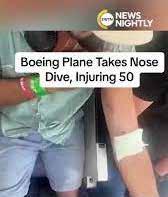
Then a LATAM flight nearly fell out of the sky as well. Due to a technical event it is said. But nobody really knows what that was – yet.
Now we had another incident where the controls jammed on landing in Newark.
Then there are reportedly problems with de-icing of the 737 and the 787.
The latest is that a whistleblower has come forward and claiming that Boeing is doing ‘shortcuts’ in terms of assembly of the 787 and the 777. These are serious allegations and add to the FAA investigation.
The 737 is probably the best selling aircraft of them all. It got introduced in 1967 and through many development cycles a total 11,727 Boeing 737 have been produced.
I found this at goldenepaulettes. com:
The 737 is estimated to have transported some 5,5 billion passengers safely through some 35 million flights with one incident per 4,5 million flights. This is an impressive safety record.

… and that makes it even harder to grasp that there are institutional problems at play.

Boeing will probably not disappear overnight. The problems can be solved, but the global trust in Boeing may have been harmed and now we look at the airlines.
The airlines might be hesitant in buying Boeing right now. Some of the new models are not yet certified due to paperwork not completed (serious stuff if we look at aircrafts). Some models are grounded and the recent FAA investigation and congress hearing all put pressure on the airlines.

What if the paying public will not enter another Boeing? Who will lose? Yes – the airline. This is already happening.
There is really only one other aircraft manufacturer right now: Airbus. The problem for US airlines is that Airbus is from Europe and that will collide with the ‘buy US’ notion.
Do we see anybody else out there?
I would point to the Chinese C919. It is exactly into the very lucrative narrow-body airliner where we see the Boeing 737 and the Airbus A320.

The C919 has been certified and is being produced. We could expect it to be sold to the Chinese airlines, but be aware: these are BIG!.
The Sukhoi Superjet was (is) a contender, directly into the same market.
I think there are others as well: India and Brazil are also in the aircraft industry.
Russia has a track record in aircraft manufacture. However, Russia is not so popular right now.
And the crunch:
the market of the big wide-body jets with a huge capacity are really only by either Boeing or Airbus.



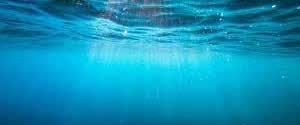
Does the allure of diving into the oceans excite? The thrill of diving into clear blue water and discovering treasure chests full of gold and diamonds?
It can also be a living or it can be for fun. Just splashing around and looking at a different world.

It is not really dangerous but there are a few things to be aware of. It is like driving a car. You need to be aware of how to get the car to stop (safely) and so on.
There are different types of diving: the easy one is the snorkel variant. Stick a long pipe in the mouth and breathe through that one.
However, save enough ‘air’ to blow the water out of the pipe if you have been diving a bit (as I forgot first time – very unpleasant to breathe then).
The most common one is probably the scuba diving part. Load up with a air tank on the back and a hose in the mouth and off we go. It can be a full helmet with an intercom so you can talk to others.
Just diving means that we go from atmospheric pressure to an increasing level of pressure on our bodies. It translates into higher absorption of nitrogen in the blood stream, strain on the heart and lungs to function and much more.

That is where we hear the word ‘the bends’. The bends is the release of nitrogen as a gas into the blood stream when the pressure goes back to normal. In essence: the blood ‘boils’ with a gas, meaning no oxygen to the body. People die or become crippled for life. Serious!
Scuba diving is ‘safe’ down to some 40 meters which is really what we can do on a holiday. Anything more requires special equipment and training. This is not holiday diving!
Commercial divers (saturation diving) can go down to some 500 meters and the ones in ‘space suits’ (atmospheric suites down) to some 650 meters.
Other dangers lurking? Plenty! Water is cold! Dipping in can cause hypothermia and if we are rather deep we can lose consciousness before we get up. Stroke because of the water pressure is another one. And we are not even looking at dangerous animals lurking there to eat us!.
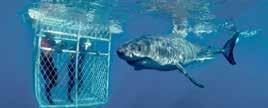

However, exploring this new alien world for fun – during a holiday –can be the best experience.
The amount of animals is vast and we can explore on their terms.
Shark viewing is great, the corals are just so colourful.
And if the open ocean is too much, we can dive in the aquarium in Cape Town!
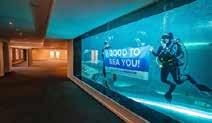
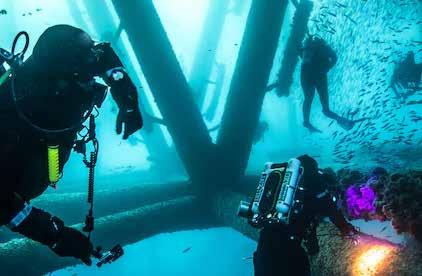
There is a very fascinating aspect to all of this. One that has always intrigued me: the ones that are installing oil rigs and where they have to live underwater for an extended period.
These are real-life heroes and they do it for a living.
It all came about with the oil finds in the North Sea. There was now a demand for human intervention in anchoring the rigs and equipment to the bottom and for maintenance work.

This got into deep dives and it was not possible to do it from a diving bell or as scuba divers. On top of the ‘space suit’ approach did not lend itself to crawling around and using different tools. Something new had to be found.
The first obstacle was the ‘air’ to
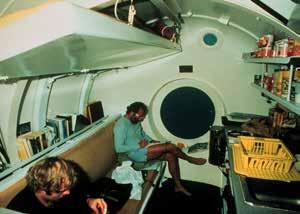
breathe. Pure oxygen was not a solution. In today’s environments we see mixtures of helium and oxygen, nitrogen mix and many more.
The divers will typically enter the habitat at the surface. The gas mixture and pressure will be regulated and then it will be lowered to the bottom where the work is to take place.
It is like going to work. It can be anormal working day with working hours and rest and sleep and so on. The habitats are typically fitted for human living for extended periods (weeks).
At the end of the work period, the entire thing will be hoisted back to the surface and the decompression starts. It can also be achieved with a diving transfer module where the divers get into this module and get hoisted to the surface, leaving the habitat for the next crew.

This is the critical part. The air mix must go back to normal and the pressure must be aligned with the outside world again. This can take days if not weeks.
The diving gear looks like something normal scuba stuff, but it is not.
Such suits can be heated as the water is cold. In fact the entire habitat needs to be temperature controlled.
I trust the pay is sufficient for all of this. This a dangerous living!

This is the one instrument that has got nearly a whole orchestra in one go.
It is popular, easy to play (sort of) and can always put a smile on everybody’s face.
The accordion is a little bit technical. There are both buttons and a keyboard. And a lot of both. Meaning one hand (mostly right hand) will operate the buttons playing the melody itself and the left hand will do the bass part on the key board (can also be buttons actually).
The sound is coming from the bellow and therefore air flowing over the reeds inside the box. Very technical.
It got ‘invented’ in 1822 in Berlin, so it is not exactly an old thing. Somehow, it also got to Russia and got incorporated in a lot of folk music in Russia.
The yearly production in 1874 (by only two factories, one in Germany and one in Russia) was some 700,000. That is a statement if I ever have seen one.
There are a few off-springs as well: the concertina which is simple to play
and does not take up a lot of space, and the bandoneon which is a more comfortable hand-held thing.
Because of the migration from Europe to North and South America we find the accordion incorporated in a lot of early folk music. Chile, Brazil, Argentina are all places to find both new and old accordion music.
As other instruments is now also found in electronic versions and these are popular in rock and jazz.
Let us listen to some of it:


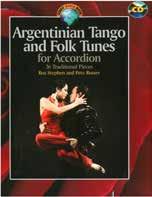

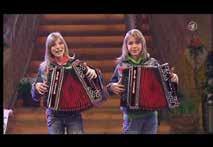
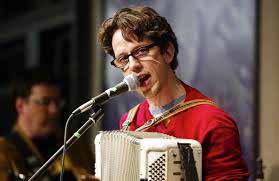



Based on the extraordinary character at the center of Charlie and the Chocolate Factory, “Wonka” tells the wondrous story of how the world’s greatest inventor, magician and chocolate-maker became the beloved Willy Wonka we know today.
Screening: 15 December 2023
there are plenty of new flicks titles and get excited

When the discovery of an ancient artifact unleashes an evil force, Ghostbusters new and old must join forces to protect their home and save the world from a second ice age.
Screening: 22 March 2024


May is coming around - already a bit nippy in the morning. But there are some noteworthy things in May - all from Wiki

The International Day of Families is observed on 15 May every year. The Day was proclaimed by the UN General Assembly in 1993 and reflects the importance the international community attaches to families. The International Day provides an opportunity to promote awareness of issues relating to families and to increase knowledge of the social, economic and demographic processes affecting families.
The theme for 2024, “Embracing Diversity, Strengthening Families,” is a call to celebrate our differences while acknowledging the fundamental bonds that connect us. It’s an invitation to recognize the diverse tapestry of human experience and how it contributes to the strength of familial bonds worldwide.


The International Day of Light is celebrated each year on May 16. Its purpose, per UNESCO, is to strengthen cooperation and leverage its potential to foster peace and development. Light-based technologies play an important role in education, science, art, culture, sustainable development, communications, energy and medicine. The annual celebration is organized by UNESCO
The International Day of Light followed the International Year of Light in 2015.
The Day was proposed by Ghana, Mexico, New Zealand and the Russian Federation and was supported by UNESCO’s Executive Board. The UNESCO General Conference approved the proposal in November 2017.

The study of light, and light-based technologies, has helped us transform our world in extraordinary ways. Light-based technologies include microscopes, X-ray machines, telescopes, cameras, electric lights and television screens.

The International Day of Light is intended to promote scientific cooperation and to harness the potential of science to foster peace and sustainable development.
Hola MaHigh-School is YOUR magazine. That is why we would love to see students writing for students about student life and everything of importance to a student in any grade10-12 across the country.

What is required? That is easy:
You have to be in grade 10-12somewhere
Impeccable in your preferred language-and that might not be English. We try to be more than just English.
Passionate about your topic of choice - no dull articles here.
Do you get anything out of it?
Well, not money, sorrry. BUT if we publish your articles you will have:
Your bio in a commercial magazine
A photo of yourself
You can put it all on your CV you can use us as a reference




Is it important?
YES it is.
Look what Rofhiwa
My name is Rofhiwa and I love to write. I have used my skills to express my thoughts on international dealings of the world which have been published in Hola MaHigh-School.
It has paid off, not only is my work printed for young people in the country to read, but it also contributed to me gettng a bursary from CNBC-Africa to do my post-graduate studies.
Would be a lot harder to get by if I didn’t have a platform like Hola MaHigh-School.
Youth Day - your day!
We do celebrate Youth Day, but there should be more to it.
After all, it is not a party, it is a chance to engage in meaningful activities.
There are activities around, but you will have to find it yourself.
Besides celebrations (!) it can also be a time to get on with the more pressing things: Open Day follow-up and preparing for mid-term exams.
But before we get into these kind of curriculum things, we also need to enjoy life.
Look forward to the holidays! after mid-term exams and that stress.
Until next time!

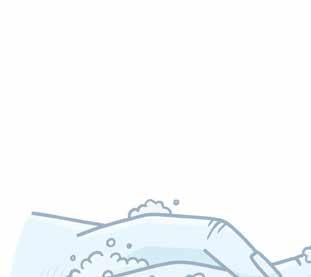

How long is 20 seconds?
Hum the first verse of our national anthem:
Nkosi Sikelel’ iAfrika






